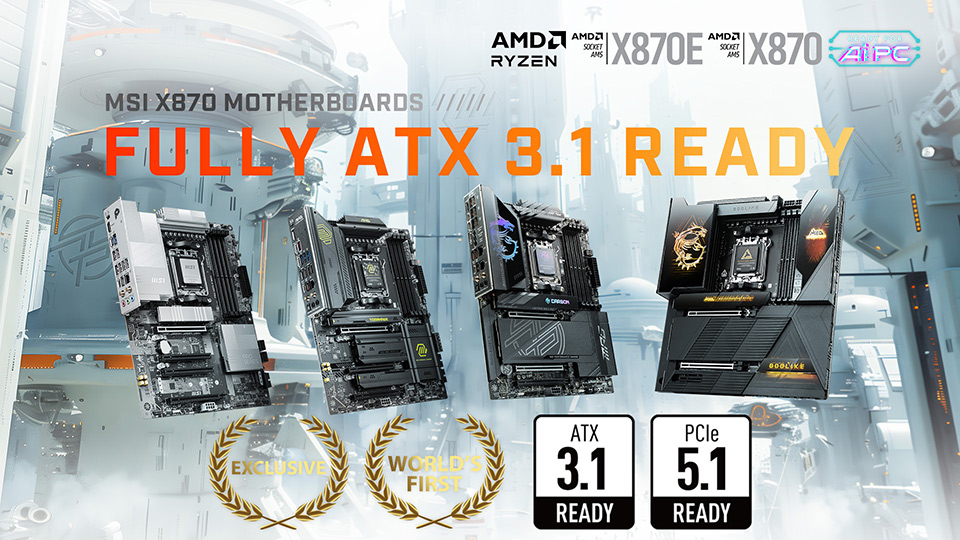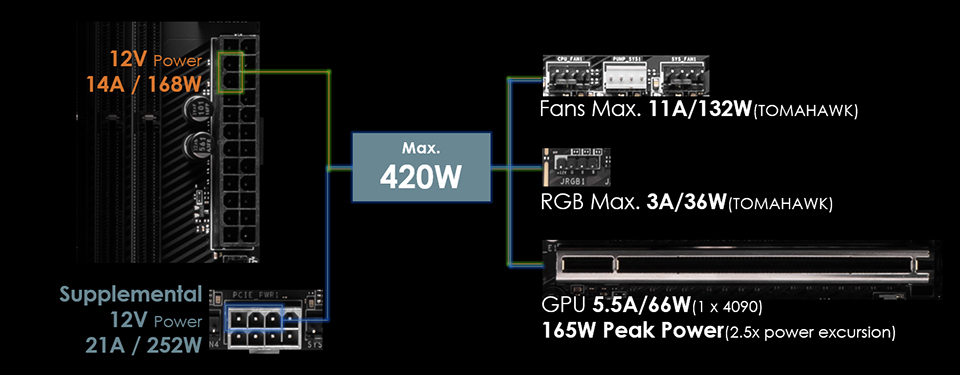
After several weeks of leaks and teasers of MSI’s upcoming X870 motherboards, the company officially announced its next-generation AM5 motherboards, which are compliant with the ATX 3.1 standard. MSI also highlighted the “Supplemental PCIe Power” feature, which appears to be a new power connector that delivers extra power to the motherboard.
The standard 24-pin motherboard connector delivers power to everything, such as graphics cards, cooling fans, and RGB lighting. However, the connector is only rated for 168W. Graphics cards require more power, and some consumers use a multi-GPU setup for AI workloads. For example, Nvidia’s next-generation GeForce RTX 50-series (Blackwell) graphics cards are rumored to require at least 500W of power.
Before the CEM 5.0 specification, the PCIe specification didn’t allow power excursions, preventing graphics cards from temporarily drawing more than 75W from the PCIe slot. However, the latest CEM 5.1 specification has enabled 2.5X power excursions on the PCIe slot up to 165W. Remember that excursions are spikes that typically last milliseconds, but that doesn’t mean the graphics card will indefinitely pull more power from the PCIe slot.
To accommodate the CEM 5.1 specification, MSI has added a new power connector to the motherboard. This connector resembles an 8-pin PCIe or EPS power connector, but it’s neither because, as mentioned earlier, it has an entirely different pinout than the two connectors. According to MSI, the connector provides up to 252W of power.
With the addition of the new connector, the motherboard’s total power jumps from 168W from a single 24-pin connector to 420W, a whopping 150% increase. The 420W capacity of MSI’s X870 boards might be excessive for some, but the increasing power requirements of some builds make this a great solution.
MSI provided a theoretical example where a GeForce RTX 4090 draws 165W from the PCIe slot while the fan headers and RGB header pull 132W and 36W, respectively. The total amounts to 333W, more than one 24-pin power connector can provide. The extra 8-pin power connector makes sense in this case.

But even with this massive power requirement, the MSI MAG X870’s supplemental PCIe power would give you some overhead for stability, allowing you to push your RTX 4090 GPU to its limits. Additionally, MSI said that this extra power should be enough for a secondary GPU, allowing your PC to remain stable even as you push its performance when running complex AI tasks.
MSI says that the 24-pin power connector will still be the main power source of its X870 motherboards, handling everything from the PCIe interface to fans and RGB. However, the supplemental PCIe power delivered through the 8-pin connector will always be there, ready to kick in and provide any additional wattage your motherboard needs when pushing your GPU to the limits or when your fans are ramping up their speed for maximum cooling.
The supplemental power connector lacks a name. However, MSI stated that the X870 motherboards are ATX 3.1 ready, so we assume that corresponding ATX 3.1 power supplies should have this power connector.
MSI’s X870(E) motherboards for Ryzen 9000 processors will be available on September 26. The company didn’t reveal the pricing, though.







